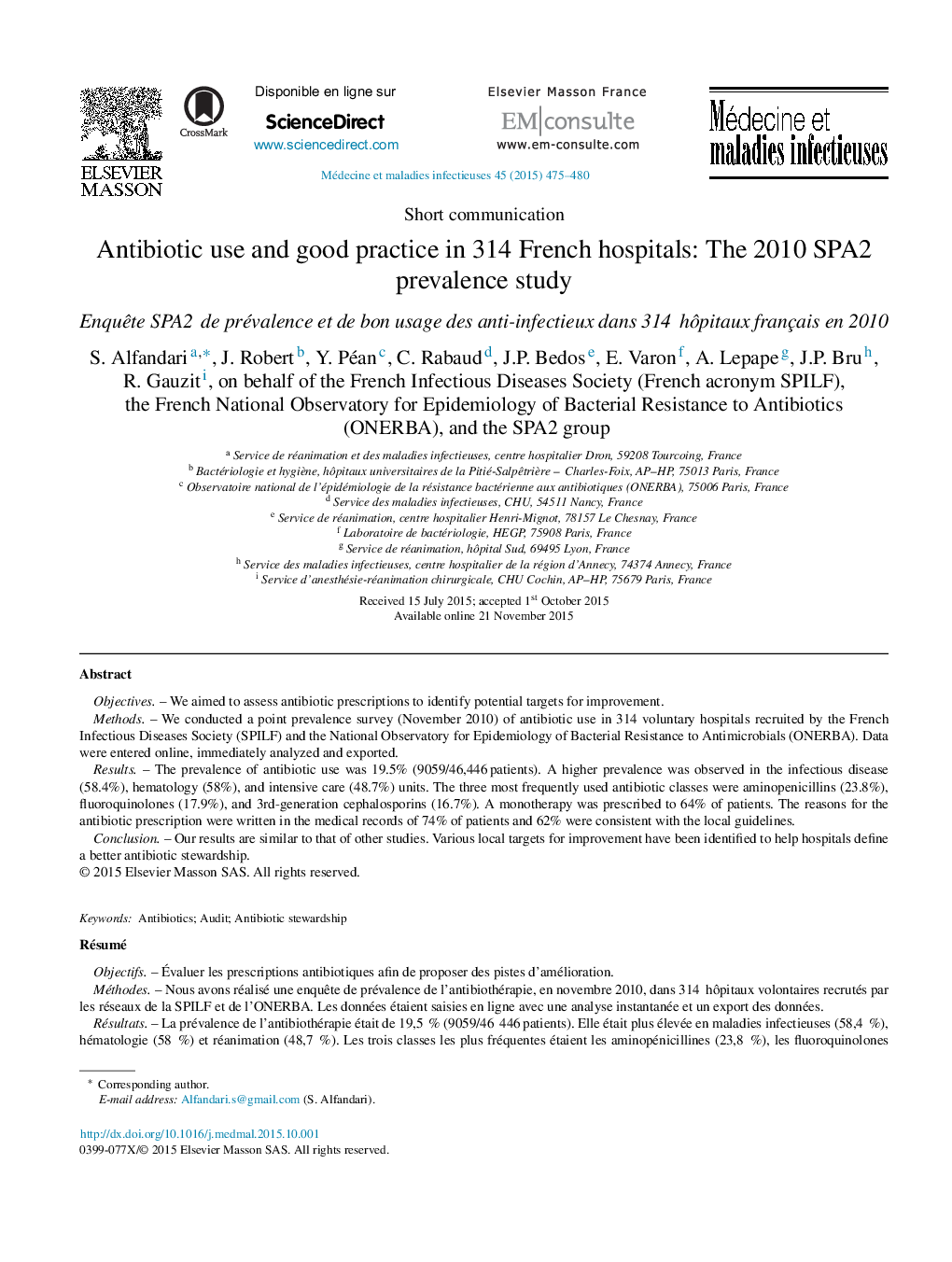| کد مقاله | کد نشریه | سال انتشار | مقاله انگلیسی | نسخه تمام متن |
|---|---|---|---|---|
| 3412439 | 1593611 | 2015 | 6 صفحه PDF | دانلود رایگان |

ObjectivesWe aimed to assess antibiotic prescriptions to identify potential targets for improvement.MethodsWe conducted a point prevalence survey (November 2010) of antibiotic use in 314 voluntary hospitals recruited by the French Infectious Diseases Society (SPILF) and the National Observatory for Epidemiology of Bacterial Resistance to Antimicrobials (ONERBA). Data were entered online, immediately analyzed and exported.ResultsThe prevalence of antibiotic use was 19.5% (9059/46,446 patients). A higher prevalence was observed in the infectious disease (58.4%), hematology (58%), and intensive care (48.7%) units. The three most frequently used antibiotic classes were aminopenicillins (23.8%), fluoroquinolones (17.9%), and 3rd-generation cephalosporins (16.7%). A monotherapy was prescribed to 64% of patients. The reasons for the antibiotic prescription were written in the medical records of 74% of patients and 62% were consistent with the local guidelines.ConclusionOur results are similar to that of other studies. Various local targets for improvement have been identified to help hospitals define a better antibiotic stewardship.
RésuméObjectifsÉvaluer les prescriptions antibiotiques afin de proposer des pistes d’amélioration.MéthodesNous avons réalisé une enquête de prévalence de l’antibiothérapie, en novembre 2010, dans 314 hôpitaux volontaires recrutés par les réseaux de la SPILF et de l’ONERBA. Les données étaient saisies en ligne avec une analyse instantanée et un export des données.RésultatsLa prévalence de l’antibiothérapie était de 19,5 % (9059/46 446 patients). Elle était plus élevée en maladies infectieuses (58,4 %), hématologie (58 %) et réanimation (48,7 %). Les trois classes les plus fréquentes étaient les aminopénicillines (23,8 %), les fluoroquinolones (17,9 %) et les céphalosporines de 3e génération (16,7 %). Une monothérapie était utilisée dans 64 % des cas. Le motif de la prescription était noté dans le dossier médical dans 74 % des cas et était conforme aux recommandations locales dans 62 %.ConclusionsCes résultats sont similaires à ceux d’autres enquêtes. Des possibilités d’amélioration sur des critères locaux permettent aux établissements d’orienter leurs politiques d’amélioration de la prescription.
Journal: Médecine et Maladies Infectieuses - Volume 45, Issues 11–12, November–December 2015, Pages 475–480